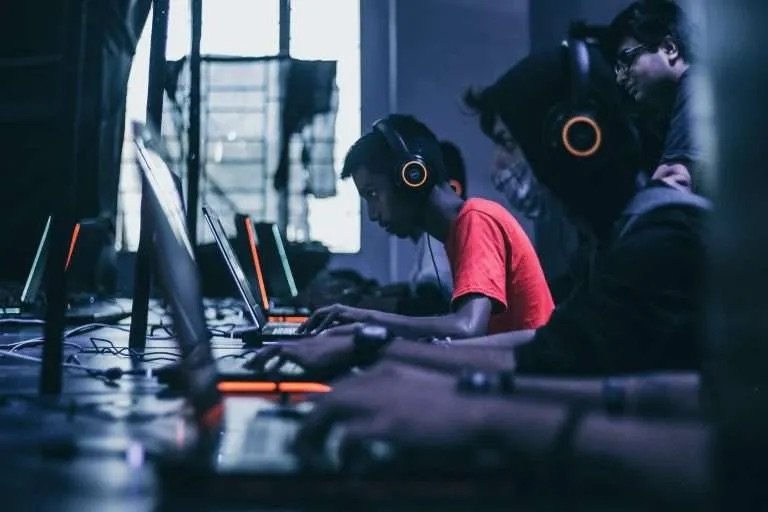Physiotherapy for Virtual Reality (VR) Gamers: Preventing Injuries in the Digital Age
Virtual Reality (VR) gaming has surged in popularity over recent years, offering an immersive experience that blurs the line between the digital and physical worlds. While VR gaming brings excitement and innovation to the entertainment industry, it also introduces new challenges for the human body. As more people spend extended hours in VR environments, physiotherapists are noticing a rise in unique injuries and physical strain associated with this digital pastime. This blog will explore how physiotherapy can help VR gamers prevent injuries and maintain their physical health in the digital age.
The Physical Demands of VR Gaming
Unlike traditional video gaming, where players are mostly sedentary, VR gaming often requires full-body movement. Players may spend hours standing, reaching, twisting, and performing repetitive actions. The immersive nature of VR means that players are fully engaged, often losing track of time and their body’s physical limitations. This can lead to a range of issues, including:
Muscle Strain: Overuse of certain muscles, particularly in the neck, shoulders, and lower back.
Joint Pain: Excessive twisting or awkward postures can put stress on joints, leading to discomfort or injury.
Repetitive Strain Injuries (RSI): Repeating the same motions, such as swinging a virtual sword or aiming a virtual weapon, can cause RSI in the wrists, elbows, or shoulders.
Balance Issues: VR gaming often requires players to move quickly in different directions, which can affect balance and lead to falls or other injuries.
Eye Strain and Headaches: Prolonged use of VR headsets can cause eye strain, headaches, and neck pain due to poor posture or improperly adjusted equipment.
How Physiotherapy Can Help VR Gamers
Physiotherapy offers a proactive approach to preventing injuries and managing the physical demands of VR gaming. Here’s how:
1. Posture Education and Ergonomics
Physiotherapists can teach VR gamers how to maintain proper posture during gameplay, reducing the risk of neck, back, and shoulder pain. This includes:
Correct Standing Posture: Encouraging neutral spine alignment and proper foot positioning to avoid overloading the lower back.
Proper Grip Techniques: Advising on how to hold controllers to minimize strain on the wrists and forearms.
Ergonomic Setup: Guiding gamers on how to set up their VR space to allow for safe movement and proper equipment positioning.
2. Strengthening and Flexibility Exercises
To withstand the physical demands of VR gaming, players need strong and flexible muscles. Physiotherapists can develop customized exercise programs that focus on:
Core Strength: A strong core supports the spine and reduces the risk of back pain during extended gaming sessions.
Upper Body Strength: Strengthening the shoulders, arms, and wrists to handle repetitive actions without strain.
Flexibility: Stretching exercises to improve flexibility, particularly in the shoulders, neck, and lower back, to prevent stiffness and pain.
3. Balance and Coordination Training
VR gaming often challenges a player’s balance and coordination. Physiotherapists can provide balance training exercises that improve stability and reduce the risk of falls, such as:
Proprioceptive Exercises: Enhancing the body’s ability to sense its position in space, which is crucial for maintaining balance during fast-paced VR gameplay.
Dynamic Balance Drills: Exercises that simulate the quick changes in direction often required in VR games, helping players react more effectively and avoid injury.
4. Injury Prevention Strategies
Physiotherapists can educate gamers on how to prevent injuries by:
Taking Breaks: Encouraging regular breaks to rest muscles and avoid overuse injuries.
Warm-Up and Cool-Down: Recommending specific warm-up exercises before gameplay and cool-down stretches afterward to prepare the body and promote recovery.
Hydration and Nutrition: Advising on proper hydration and nutrition to support muscle function and overall health.
5. Addressing VR-Induced Strain
For those already experiencing pain or discomfort from VR gaming, physiotherapy offers targeted treatments such as:
Manual Therapy: Techniques like massage or joint mobilization to relieve muscle tension and improve mobility.
Therapeutic Exercises: Specific exercises to address muscle imbalances or weaknesses that contribute to pain.
Pain Management Strategies: Advice on managing pain through heat, cold, or other modalities.
Tips for Safe VR Gaming
1. Set Time Limits
Limit VR sessions to prevent overuse injuries and give your body time to recover.
2. Stay Aware of Your Surroundings
Ensure your VR space is clear of obstacles to avoid trips or falls during gameplay.
3. Adjust Your Equipment
Make sure your VR headset and controllers are properly adjusted to fit your body and reduce strain.
4. Listen to Your Body
If you start to feel discomfort or pain, take a break and stretch. Don’t ignore the signals your body is sending.
5. Consult a Physiotherapist
If you experience persistent pain or discomfort, consult a physiotherapist to address the issue and prevent further injury.
Conclusion
As VR gaming continues to grow in popularity, so does the importance of understanding the physical demands it places on the body. Physiotherapy provides valuable tools and strategies to help VR gamers prevent injuries, improve performance, and enjoy their gaming experience safely. By incorporating physiotherapy into their routine, gamers can ensure that their passion for VR doesn’t come at the cost of their physical health.

